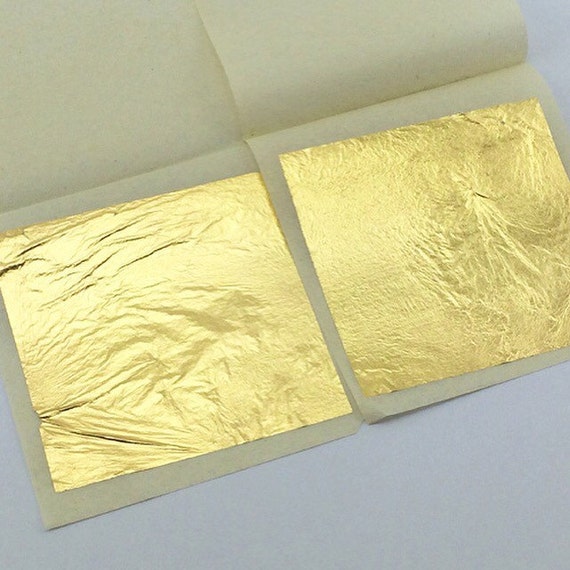Edible Gold Leaf: Everything You Need to Know
For generations, edible gold leaf has been used to provide a luxurious touch to meals and drinks. Edible gold was a symbol of riches and excess, used to garnish fruit and desserts or swirled into drinks.
Fortunately, edible gold leaf is much more economical these days and may be used to embellish cakes, cookies, and cocktails.
It's perfectly safe to eat and vegan, and it can rapidly convert even the most basic of cakes into something glitzy. Here is all you need to know about working with edible gold leaf, whether you are using just a touch of gold or completely covering a cake.

Is edible gold leaf made of genuine gold?
It certainly is. In fact, edible gold is quite pure gold and will always be at least 21 karats, since anything less would have impurities that aren't as safe to consume. If only fat and sugar were the same, gold would be deemed physiologically inert, which means it would pass through you without being absorbed.
What kinds of edible gold leaf are there?
Sheets and flakes of edible gold leaf are the most prevalent types you'll see. Flakes are ideal for adorning macarons, cupcakes, and even drinks with small crinkled pieces of gold.
If you need to cover a larger surface in gold, such as a cake, gold leaf sheets are the ideal option. Sheets are available in two varieties: loose leaf and transfer leaf.
What is the distinction between loose leaf and transfer leaf?
The distinction between loose leaf and transfer leaf is that loose leaf sits loosely between the sheets of the book, whereas transfer leaf stays on the paper until you apply it to another surface.


So, which is better?
It all depends on what you intend to use it for. Loose leaf must be handled with brushes or tweezers and is ideal if you want to be able to tear off little pieces or are secure lifting up the entire sheet and applying it where you desire. When you place a transfer leaf face down on wax paper and apply mild pressure, it will transfer onto another surface.
How do you put it to use?
Even though it may appear simple, dealing with edible gold leaf requires some practise. It's a fragile product that's difficult to handle and leaves little room for error. However, a small amount may completely transform a cake, so it's worth the effort! The most important thing to remember is that even slightly smudged gold leaf looks magnificent.
Use loose leaf gold to apply little pieces of gold leaf as a garnish or small embellishment. Using a brush or tweezers, delicately pick up the piece of gold and set it where you want it.
We advocate utilising transfer gold leaf to cover huge areas, such as a cake. If your cake is coated in fondant, softly moisten the surface with a damp paper towel, then carefully place the transfer gold leaf sheet face down on the surface of your cake, apply mild pressure, and gently lift the sheet away.
You can either apply the entire sheet at once, as if you were covering the entire cake in gold leaf, or you can apply small pieces of the sheet at a time, which produces an appealing flakey aspect and allows your sheet of gold to stretch further.
What is the lifespan of gold leaf?
Gold has a long shelf life and will remain brilliant and dazzling if stored in a cold, dry place.
Is gold leaf available in different colors?
Yes. The colour of gold leaf varies depending on the karat value; 24k gold leaf is more yellow than 23k leaf, yet both are gorgeous. Silver leaf is also available!
Some Tips:
- Remember that gold is a metal, so avoid putting it in the microwave!
- Gold leaf will stick to your hands; always use a brush, tweezers, or cotton gloves when handling it.
- We also sell silver leaf that can be eaten!

